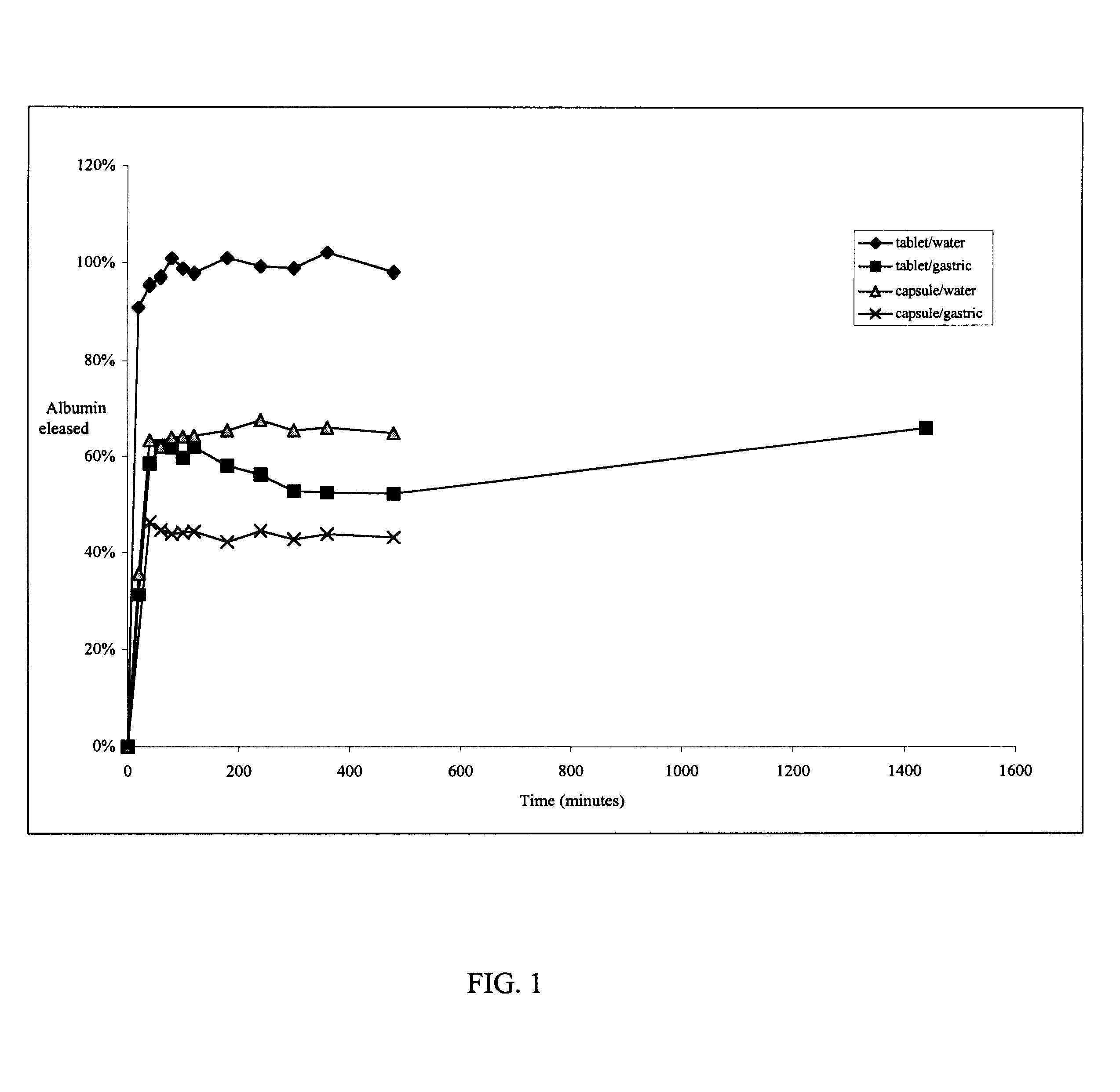The keratin suspension may be heated, and is preferably heated to boiling for a time sufficient to swell the keratin. The keratin suspension may be stirred without heat for a longer period of time to allow a more complete association or reaction between the
sulfonic acid groups and the base cations. The continued reaction time at or near
room temperature, or even below
room temperature while stirring is contemplated by the inventors to allow the base cations to approach and bind to the keratin anionic sites with a
lower incidence of
peptide backbone degradation that could occur with continued boiling. The cations for use in the present invention, therefore, must be able to interact with the anionic cysteic groups in the keratin material. The use of the term "cations" or "
monovalent cations" in the present disclosure and claims is indication of those cations that are able to do so. After a sufficient reaction time, the keratin solid may be removed from the suspension by
filtration, for example, and dried, leaving a solid salt formed of the keratin sulfonic acid or
cysteic acid groups and base cations. This solid may be shredded into a fibrous form and / or ground into a finely divided powder. This solid may be used in certain embodiments, or it may be hydrated by adding water, for example, and the hydrogel, or viscoelastic hydrogel thus formed may be used in certain embodiments.
The hydratable keratin solids as described herein form a hydrogel or a viscoelastic hydrogel upon application of water, and also are contemplated to contain skin healing peptides associated with the keratin, which may leach out of the keratin products when wet. The keratin products thus provide an added benefit, in addition to water absorbency, that is, healing or soothing peptides are also released that may have beneficial effects on the skin of a user of the products. This property offers certain benefits in embodiments such as wound dressings, as well as
cosmetics, gels or lotions for application to the skin.
The keratin hydrogel is also believed to be suitable for use as an
implant filler, for example, used to fill a
breast implant, or to augment
soft tissue for cosmetic, reconstructive or aesthetic reasons, or in a
tissue expander application. The keratin product may also be used in
cosmetics to retain
moisture next to the skin. The performance of
cosmetics which reduce the greasy appearance of skin can be enhanced through the use of
moisture absorbent keratin material as an additive or base ingredient, for example, in a cosmetic formulation. The keratin absorbent and hydrogel can also be used for a variety of
tissue engineering applications. Both materials may act as biocompatible scaffolds that provide a mitogen, the keratin
peptide, to the cellular components of a tissue-engineered
implant.
In certain embodiments the present invention may be described as a method for promoting skin healing, in particular in those embodiments in which a keratin solid or hydrogel as described herein, such as a keratin solid or hydrogel in which the keratin is obtained from human hair, for example, is contained in, or forms a portion of a cream,
lotion, or gel for application to skin, hair, lips, or nails, for example. Such formulations can offer various advantages such as moisturizing the skin, or inhibiting loss of
moisture from the skin, as well as providing the healing effects of peptides that may leach from the keratin containing product. Such creams, lotions and gels may be applied to damaged skin, such as dry, burned, sunburned, wrinkled,
cut, scraped, chapped, irritated, ulcerated or otherwise damaged skin or other tissue.
The release rate of a keratin
excipient preparation is determined by the rate at which water is absorbed and the keratin solid disintegrates. The water
absorption rate of the solid keratin can be controlled by the number of sulfonic acid residues generated in the oxidation procedure. By exposing the keratin
source material to extremes of oxidant concentration, temperature, and time, extremes of
absorption rate can be obtained. For example, at low oxidant concentration, colder temperatures and short time periods, relatively few disulfide residues will be converted to sulfonic acid residues. Such a keratin solid, further processed as described herein will absorb relatively little water and disintegrate relatively slowly. Conversely, a keratin solid prepared at high oxidant concentration, at boiling temperature for a long time period, further processed as described herein, will absorb relatively large amounts of water and disintegrate relatively quickly. Disintegration rates between these extremes can be obtained by
processing the keratin
source material using intermediate conditions.
 Login to View More
Login to View More 


